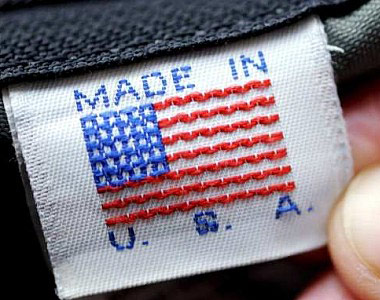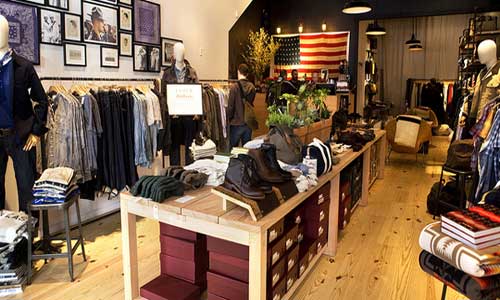"As per recent American Apparel and Footwear Association (AAFA) data, the US apparel and footwear industry contributed $383.6 billion in retail sales to the US economy. According to AAFA, the industry continued to be in a deflationary market for apparel during the past decade, with per capita consumption of apparel in volume terms down 2.5 per cent in 2016. The actual domestic production of apparel and footwear has risen by more than 50 per cent from its lowest point in 2009 but this increase didn't move the percentage share of the total market in ‘Made-in-America’ goods significantly."

As per recent American Apparel and Footwear Association (AAFA) data, the US apparel and footwear industry contributed $383.6 billion in retail sales to the US economy. According to AAFA, the industry continued to be in a deflationary market for apparel during the past decade, with per capita consumption of apparel in volume terms down 2.5 per cent in 2016. The actual domestic production of apparel and footwear has risen by more than 50 per cent from its lowest point in 2009 but this increase didn't move the percentage share of the total market in ‘Made-in-America’ goods significantly.

Many surveys have highlighted Americans prefer ‘Made in America’ products and are willing to pay a premium for them. Cotton Incorporated’s Lifestyle Monitor Survey found more than half of all consumers (55 per cent) say it is ‘very or somewhat important’ that the apparel they buy is made in the US and those in the prime ages for apparel consumption, consumers aged 35-to-70, are significantly more likely to prefer made in America (66 per cent versus 40 per cent).
Globalisation a decisive factor
Rick Helfenbein, President & CEO, AAFA, points out globalisation is a critical factor when looking at these statistics. Around 95 per cent of the planet’s clothes-wearing population live outside of the US. This is a significant consideration when developing sourcing strategies. It is important to remember that apparel and footwear is a global business. Apparel and footwear companies need to determine the best way to source their product. This means keeping in mind the location of materials, the quality of craftsmanship, and the final cost for the end consumer. Through the years, this has meant diversifying supply chains around the world to meet this mix of needs.
Giving a holistic perspective on sourcing, he said when a product is imported from China, it is assumed that 100 per cent of the value of that product went to the Chinese. This ignores the fact that 70 per cent of the value of the product is America-made, be it the design, marketing, intellectual property, etc. The fact that products based on American ingenuity are imported into countries throughout the world, would thus mean that imports are actually very good for the US economy. He further admitted that manufacturing jobs left the US because of the ‘-ations’ – automation, innovation, globalisation, over-regulation. To increase jobs in the US, there needs to be investment in the other ‘-ation’ – education – to prepare for the jobs of the future.
Creating jobs
Helfenbein says, if the US has to make more products, there are several groups and companies that have made major strides in automating the supply chain, especially in the footwear space. As for creating more jobs for Americans, the answer lies in employing Americans on the intellectual and information-side of the industry. The better route is to create more jobs elsewhere in the industry, such as design, marketing, logistics, R&D, tech jobs, etc., that are higher paying and play to the strengths of the US job market.
The industry will increase its contribution to the US economy by focusing on two factors: opening new markets to American products by removing trade barriers, and protecting the intellectual property produced and owned by American companies. One must focus on ‘Created in America’ tag rather than ‘Made in America’ and that’s where the real difference would lie.












